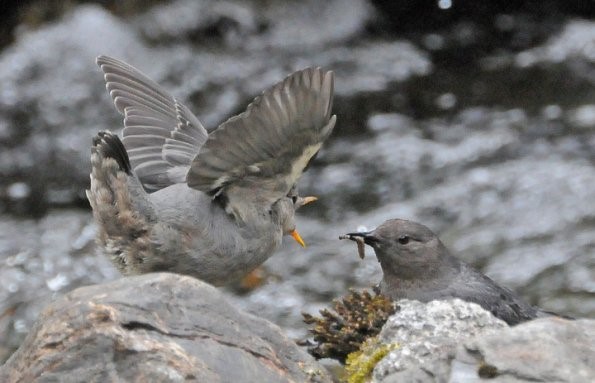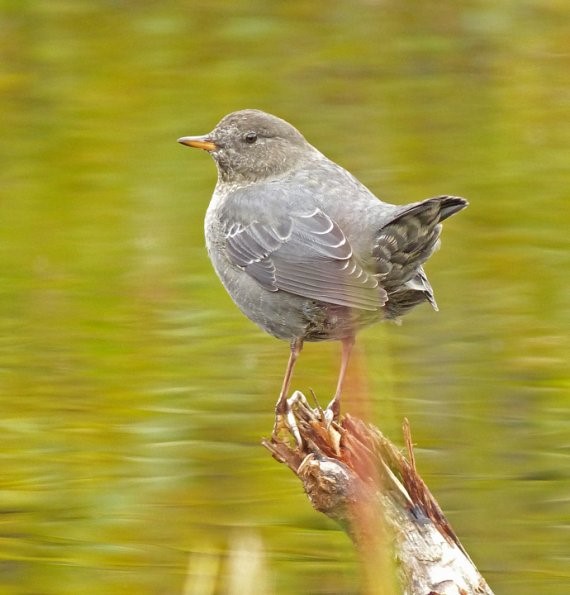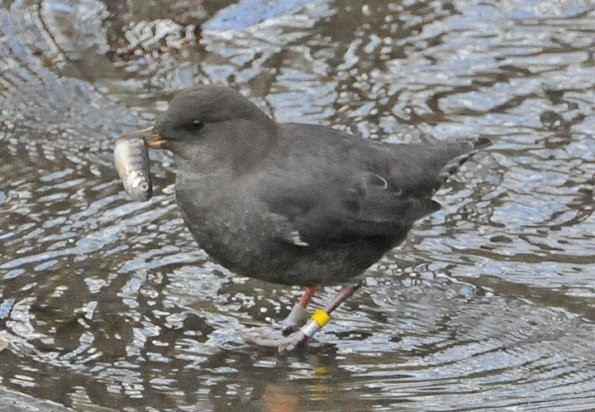Habitat and Geography
LOCATION
The American
Dipper, typically resides in areas located near turbulent,
rapid-flowing streams. A majority of the American Dipper
population can be found in the Western American states and
Western providences of Canada, but also in some southern regions
in Central America such as Panama and Costa Rica (Tyler and
Ormerod 1994). Although this particular bird is usually found in
mountainous regions at higher elevations, it is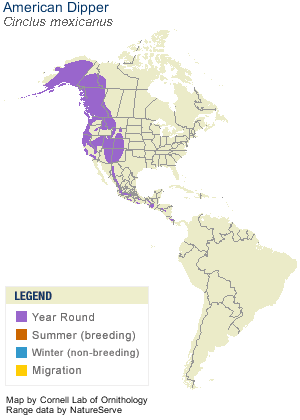 likely that they
can also be found in areas closer to sea level so long as there
are streams they find suitable enough comprised mostly of clear,
rocky river beds and cool water (BirdWeb 1999).
likely that they
can also be found in areas closer to sea level so long as there
are streams they find suitable enough comprised mostly of clear,
rocky river beds and cool water (BirdWeb 1999).
Occasionally, the
American Dipper will inhabit quieter, slower moving areas of
streams such as lake edges or ponds, however, the American
Dipper mainly inhabits areas of river ecosystems with
fast-moving streams, cascades, or waterfalls where they are able
to locate a variety of their preferred invertebrate aquatic prey
usually residing under the rocks of the riverbed (Strom et al.
2009; BirdWeb 1999). The rocky riverbeds of the American
Dipper habitat provide a sufficient source of aquatic
invertebrates and, therefore, American Dippers are heavily
dependent on the productivity these aquatic environments have to
offer (Strom et al. 2009). Some organisms that also
reside near these aquatic environments include
water fleas and
damselflies. Unfortunately, sometimes the
preferred, rapid-moving currents lead to excess discharge into the
streams making the streams and rivers inhospitable to a considerable
amount of the American Dipper food sources. For this reason,
American Dippers will likely migrate to other areas close by during
times of “raging torrents” specifically during times of great snow
melt causing currents to be the fastest (Garwood et al.
2009). The research conducted by Garwood, Pope and Larson in 2009
found that the American Dipper is rarely
found away from bodies of water thus resulting in the name “the
aquatic songbird.”
NESTING SITES
In addition, the nesting locations this particular dipper
species builds and resides in tends to vary from cliffs, banks,
boulders, and bridges located near streams (Garwood
et al. 2009).
Although some dippers migrate, not all do. Instead, the
sedentary/residential individuals tend to stay close to their
original location by just moving to nearby rivers in the winter
and areas with high concentrations of hatching ins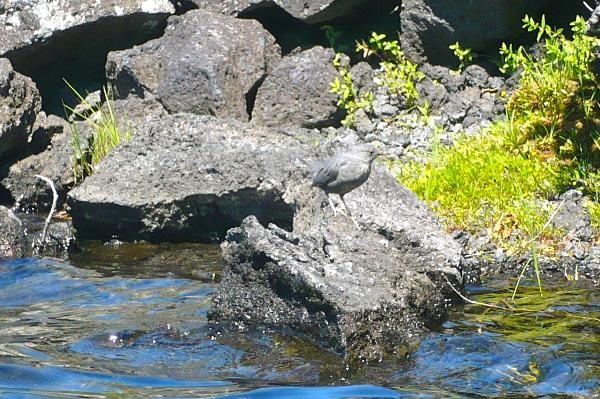 ects during
the spring and summer seasons (Morrissey et al. 2004). More about
the American Dipper’s unique partial migratory life-style will
be further described in the
life history/ reproduction sections.
Furthermore, the American Dipper is a particular species of bird
that is identified as a passerine belonging to the order
Passeriformes. Species of this order are classified as having a
specific toe arrangement that helps aid with perching, a
characteristic of the American Dipper used for perching on these
boulders, cliffs, and banks of their preferred habitats. The
nests the American Dippers build are quite large in diameter sometimes reaching up to 12 inches in diameter (BirdWeb 1999).
The close location of the nests to the aquatic habitat helps
keep the moss building components of the nest alive as a result
of the spray from the stream (BirdWeb 1999).
ects during
the spring and summer seasons (Morrissey et al. 2004). More about
the American Dipper’s unique partial migratory life-style will
be further described in the
life history/ reproduction sections.
Furthermore, the American Dipper is a particular species of bird
that is identified as a passerine belonging to the order
Passeriformes. Species of this order are classified as having a
specific toe arrangement that helps aid with perching, a
characteristic of the American Dipper used for perching on these
boulders, cliffs, and banks of their preferred habitats. The
nests the American Dippers build are quite large in diameter sometimes reaching up to 12 inches in diameter (BirdWeb 1999).
The close location of the nests to the aquatic habitat helps
keep the moss building components of the nest alive as a result
of the spray from the stream (BirdWeb 1999).
Due to the fact that American Dippers are heavily dependent on
river ecosystems, their primary food source includes aquatic
invertebrates, which will further be explained in the
Form and Function
section.
